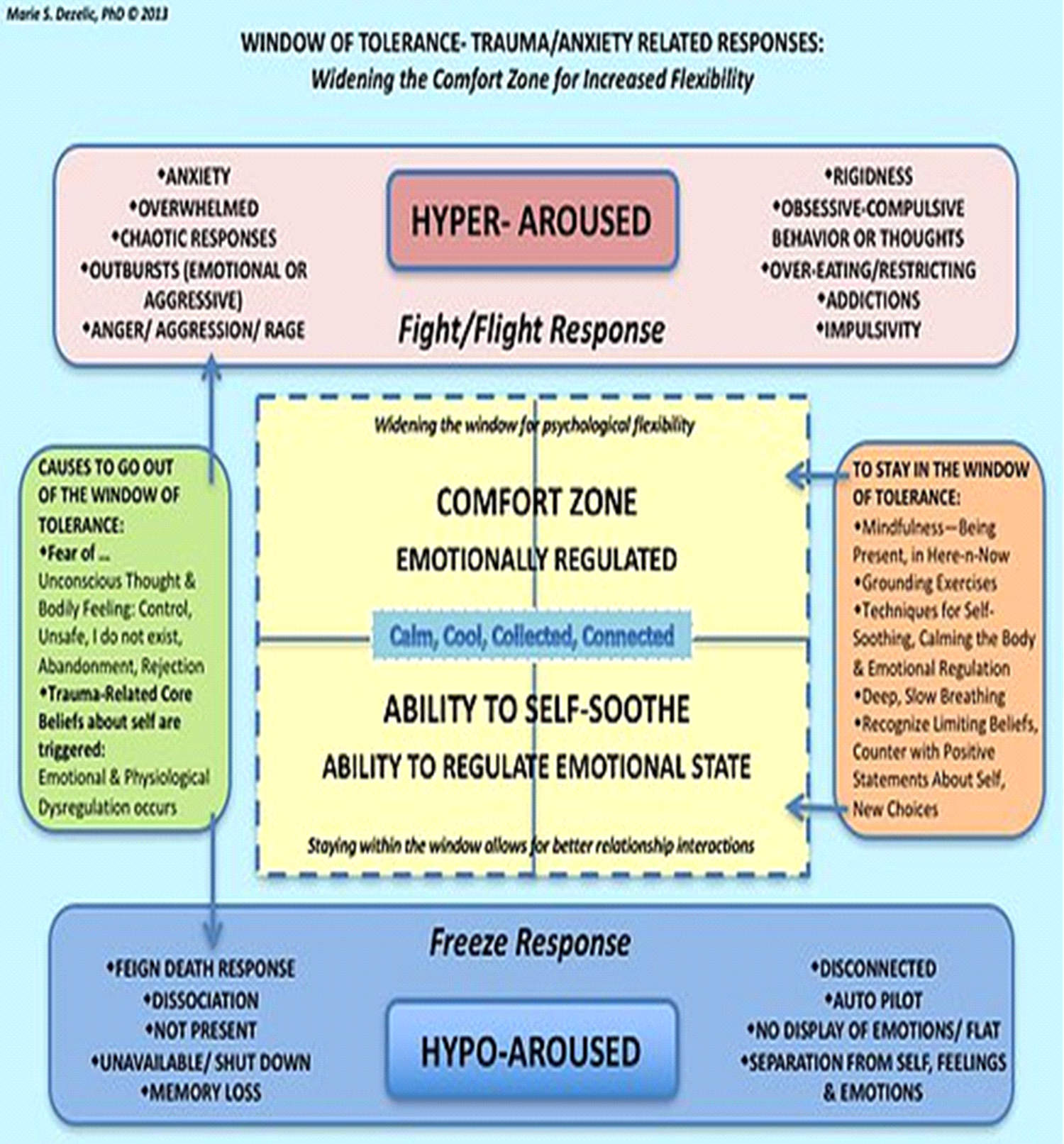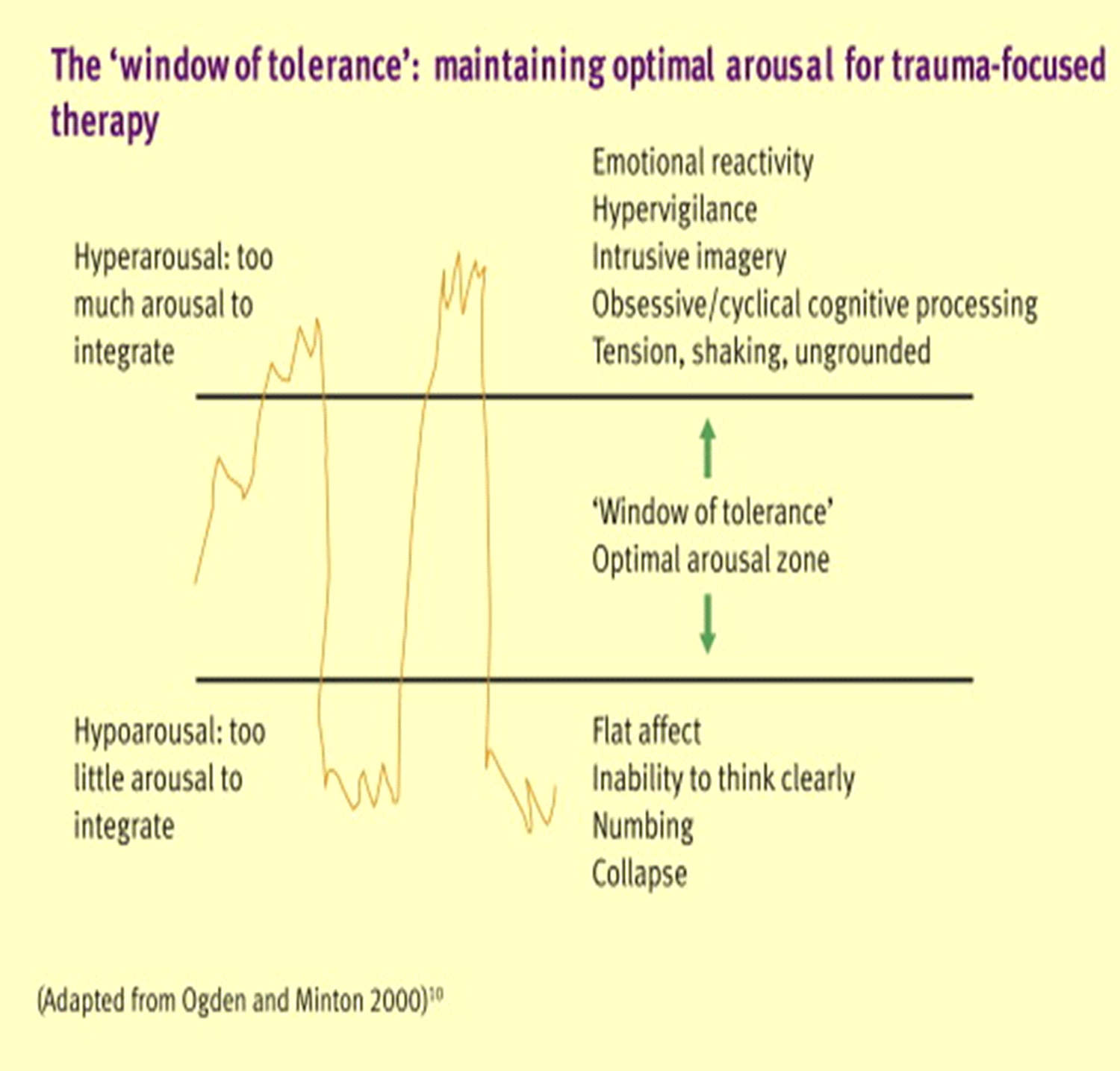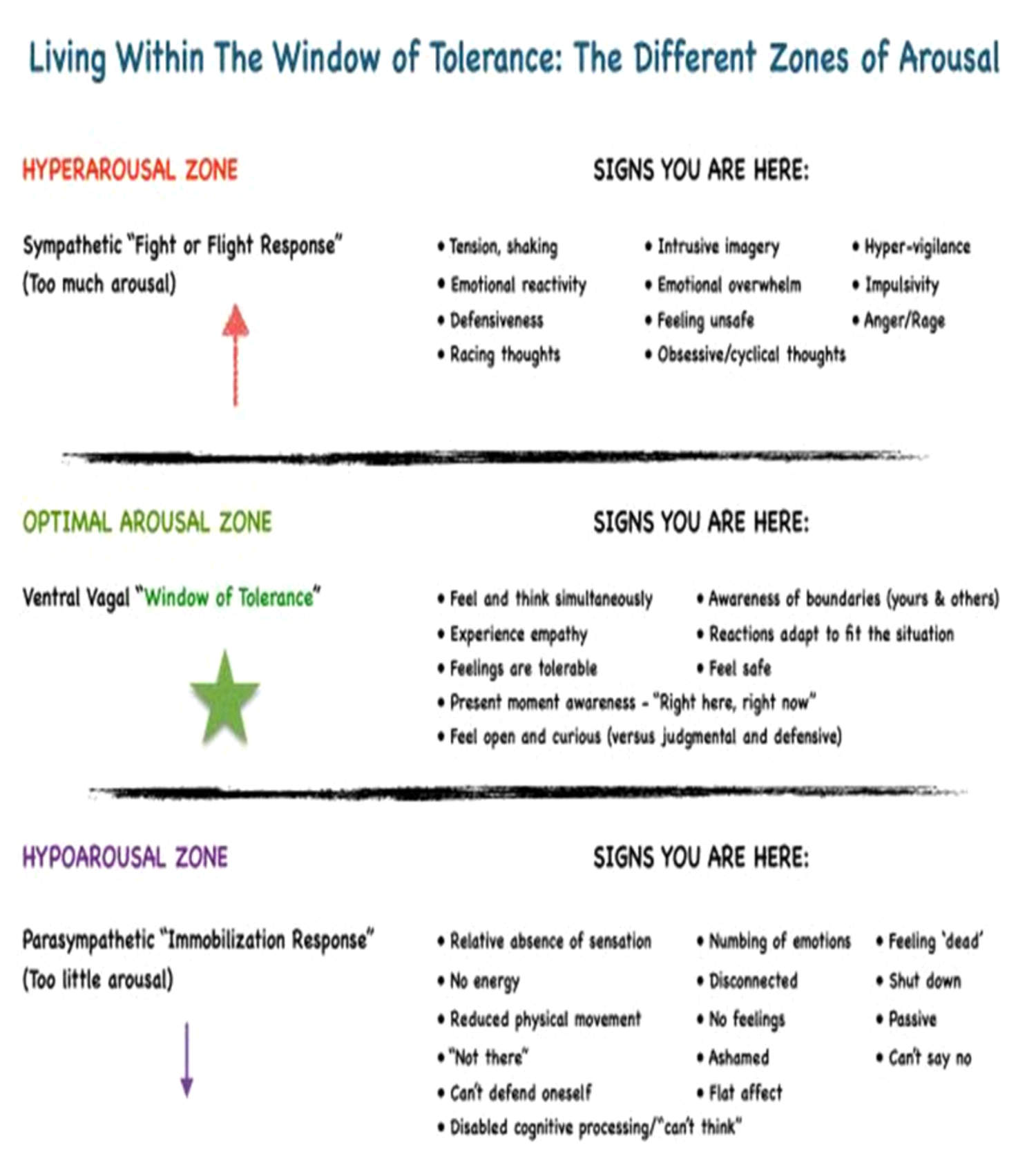
Individual Somatic Psychodrama Therapy
March 6, 2017
Massage & Shiatsu Therapy School & Clinic
February 5, 2018
Returning to ‘flow’; Regulating the nervous system, Restoring the harmonics of the body mind.
Before working with anxious, distressed or hyper vigilant clients it’s critical to understand the physiology of the nervous system from a somatic emotional perspective.
Teaching your clients about the” Window of Tolerance” (Ogden, Minton, 2000) can be a useful visual and experiential tool to their self-management and emotional balance. Many clients who come to see us have a hard time hearing us if they are in a state of anxiety or depression. Words don’t communicate to higher brain centers, if the amygdala (the brains’ warning signal) is switched on and their nervous system is either in hyper vigilance or hypo vigilance.
The Brain’s intricate neural networks are finely tuned and coordinated from birth. They inform the nervous system that defines our emotional intelligence and resilience. If trauma or abuse occurs at any time, from utero to adolescence, it can distort, interrupt and dysregulate the communication within the nervous system and even impair development. The impact is like a seismic shift felt throughout the whole person, body, mind and spirit; destabilizing their environment, their relationships and their physical wellbeing.
We’ve grown in our understanding of the triune brain and the three distinct parts of our brain’s physiology, a) the primitive, reptilian, area of the brain stem with its more primary functions of breath and balance to the b) limbic realm of emotional attachment and self- soothing to the c) higher brain functions of the rational neocortex. This is basic neurobiology. The next layer of understanding involves the sympathetic and parasympathetic aspect of the nervous system which manages a person’s responses to life events. Whether it’s the digestive, calming and resting phase of the parasympathetic or the surge of energy into action which can be vital and creative in sympathetic response or reactive in diverse situations when the body will be readied for fight or flight to survive. Knowing how this works is helpful to us as therapists, but how can we make it useful to our clients and patients? Creating a living picture of this experience helps the client to visualize and interpret how their nervous system works as well as how they can better manage and balance their body mind. Putting into practice a variety of self -help tools and teaching them out to maintain a more harmonious equilibrium.
Most therapists who work in this population know that it’s necessary to start from a place of grounded safety. Creating an environment where the client can feel centered and connected to their breath and body awareness. This will also set the stage for the ‘window of tolerance’ the state of modulated parasympathetic and sympathetic arousal. Alert and listening but relaxed and comfortable inside their own skins. A good starting point is working with their body mind, focusing on breath and relaxation. Simple yoga practices of breathing can be used, e.g. alternate nostril breathing or centered breath, bringing their attention from the breath to noticing what sensations this creates inside their bodies; What are the sensations that they experience? Are they positive? Sometimes pain or anxiety may surface. Simply having them open their eyes can bring them into relationship with you, social engagement can restore a more comfortable tone. Acknowledging that discomfort is one experience, then explore how they can bring some element of comfort into their internal body world. Using appropriate touch can be a way to focus on an area of their body which holds tension. Asking first and then applying a gentle focused touch on their shoulders or mid back, near the heart area, drops their tension and puts them into a state of ease. Now you can introduce the model. Having a print out of these three handouts can be a good visual aid.
Explain each aspect and as you describe them, use either pieces of paper with the words for each part printed out or (I prefer) coloured scarves. I ask the client which colour would you choose now to represent this state of calmness you’re feeling in your body? The colour blue may be chosen. “How big is this space for you now”? I then have them spread it out to match the size it feels to them. “Step onto this colour, describe what you feel in your body, make a posture for this”. Next, we explore their reactive areas. I ask “Which is your coping style when you get distressed, depending of course on the situation”? Starting gently with a simple problem, E.g. going to the dentist. What is your first reaction? Avoidance? This could be flight or withdrawal and freeze. I explain dissociation from their body. Asking them, “how do you manage your anxiety or fear? Where is it in your body”? If it’s avoidance or shut down, then it’s more hypo vigilance. What colour would this be? Choose this colour and place it below the window of tolerance. Explore what helps them in this state. The next step is to explore hypervigilance as well in the same instance.” If you get to the dentist, are you tense and feeling the need to run, or resist the procedure”? “What colour would this be, how do you react, what’s the feeling in your body”? “Who or what can help you in this moment?” Now that you have mapped it out their neocortex is engaged, and they can begin to see or assess better ways to manage each situation.
Work slowly through simple to more complex situations and experiences. It’s important to end each session in the Window of Tolerance’s, comfort zone. Give homework and teach a variety of skills to manage their various states outside of the window. Building resilience is like building muscles, it takes slow practice, warming the muscles, easing the tension and giving good nutrition to the body mind.
Key points to remember,
- Begin sessions with warm -ups to balance the brain stem, site of the primitive reflexes, breath and balance. Sounding or movements can be used to find a calm center.
- Sooth the amygdala, source of ‘red alert’ and vigilance. Speaking calmly and explaining each step allows the nervous system to gather information and be prepared.
- Establishing deep sensory regulation through touch on shoulders, joints or back of heart to ground the nervous system and maintain conscious awareness.
In this way, as therapists we will help to promote a base line of regulation and return to ‘flow’. By establishing an embodied center of balance that encourages enough safety for deep work, we can explore personal history without setting off alarms and retraumatizing. Titrating into sources of strength while gently releasing frozen shock allows the nervous system to organically restore a more integrated harmonious whole self. Working experientially and psychodramatically we continue to work on the broken areas of relationship, repair the lost parts of self and ultimately find the alchemical gold of the soul.



